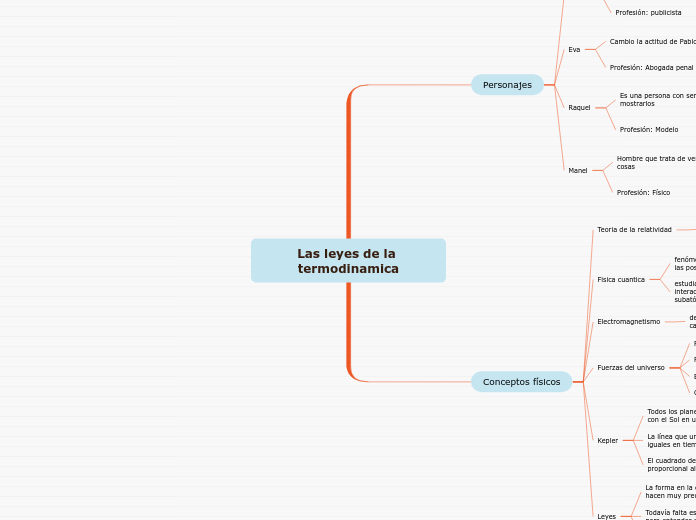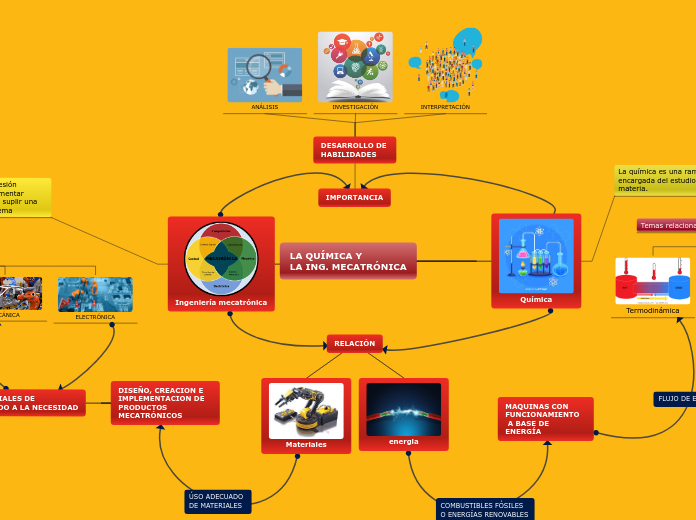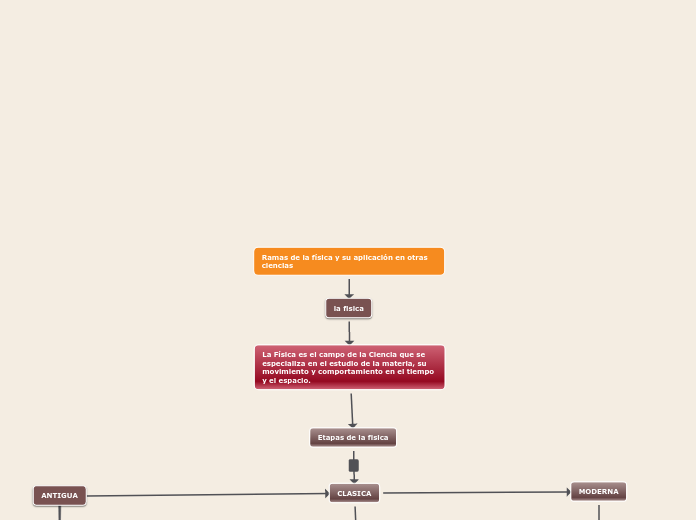Las leyes de la termodinamica
To name your story, you have to think about the overall message and what you want your audience to understand from the story. Also, make it relevant and easy to remember.
Conceptos físicos
The ending of a story is essential. We all know that if the ending is weak, what happened before loses its importance. So make it unpredictable, but fair. A resolved ending answers all the questions and ties up any loose threads from the plot.
Leyes
Explican el universo mediante expresiones matematicas
Todavía falta estudiar miles de formulas matematicas para entender el universo
La forma en la que se escriben y se expresan las hacen muy precisas
Kepler
El cuadrado del periodo de cualquier planeta, es proporcional al cubo del semieje mayor de su órbita
La línea que une un planeta al Sol, barre áreas iguales en tiempos iguales
Todos los planetas se mueven en órbitas elípticas, con el Sol en uno de los focos
Fuerzas del universo
Gravedad
Fuerza nuclear débil
Fuerza nuclear fuerte
Electromagnetismo
describe la interacción de partículas cargadas con campos eléctricos y magnéticos
Fisica cuantica
This is the closure section of the story.
See examples of possible outcomes below:
- all problems have been solved
- it's clear how each one of your characters ends up
- your main character is transformed by the challenge
estudia las características, comportamientos e interacciones de partículas a nivel atómico y subatómico
fenómenos desde el punto de vista de la totalidad de las posibilidades
Try answering these questions to come up with a closure:
- Have all the problems been solved?
- Is there a clear picture of what happens with each character in the story?
- Has the challenge transformed your main character?
- How do the characters feel in the end?
Teoria de la relatividad
This is the moment when the main character surpasses the last obstacle and finally faces their greatest challenge.
The climax usually follows one of these patterns:
- realization
- resolution
- choice
Type in your answer.
Albert Einstein determinó que las leyes de la física son las mismas para todos los observadores, y que la velocidad de la luz en el vacío era independiente del movimiento de todos los observadores
Personajes
The middle of the story is where you add layers of complications that will lead to the end. Reveal more about the character's journey. Did their personality go through changes? How did they overcome the challenges? And as you build up the story’s central conflict, make it more personal to that character. Also, from the middle act, you have to lead into the final act.
Manel
Profesión: Físico
Hombre que trata de ver la explicación física de las cosas
Menosprecia a los demas
Hombre muy inteligente que tiene como principar guía para su vida la física
Raquel
There wouldn't be any tension and excitement in your story if there weren't any obstacles in your character's way.
Profesión: Modelo
Es una persona con sentimientos abiertos y que no teme al mostrarlos
A story is nothing more than a character overcoming a series of difficulties to reach the desired goal. Obstacles usually create suspense and conflict. In overcoming obstacles, there is growth: weak becomes strong; hatred turns into love; sadness into happiness; wrong into right; lies into truth; or evil becomes good.
See a few examples below:
- stopping a meteor
- finding a killer
- finding love
Deja que todo pase aceptando tanto lo positivo como lo negativo
Ve los sentimientos por encima del fisico
Eva
Your character(s) need(s) motivation in order to solve the challenge(s).
Profesión: Abogada penal
Secondary characters might also have motives that lead them to cross paths with the main character or which might trigger them to help the main character.
Cambio la actitud de Pablo
Why does your character need to confront this challenge? What does he/she expect to accomplish by solving it?
See a few examples:
- will marry in 3 days
- can fix the mistakes of the past
Hace lo que sea por el amor
Acepta la derrota o cuando pierde algo
Pablo
Each story has a main character and that character usually needs to solve a problem or challenge. The character's challenge is the one that creates tension throughout the story.
Profesión: publicista
Type in any other challenges which other characters in the story need to face.
Cambia de actitudes gracias al amor
In most stories, there are 3 challenges. The number 3 is a mystical number symbolizing completeness. Try to come up with interesting challenges with which your character needs to struggle.
See a few examples below:
- turns into a werewolf at night
- is sent back in time
No intenta evitar las cosas que tienen que pasar
Actúa como cree que es mejor










